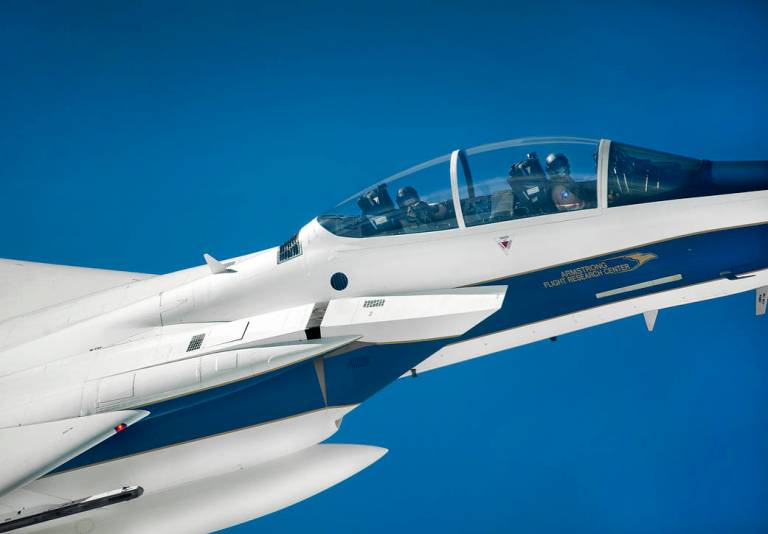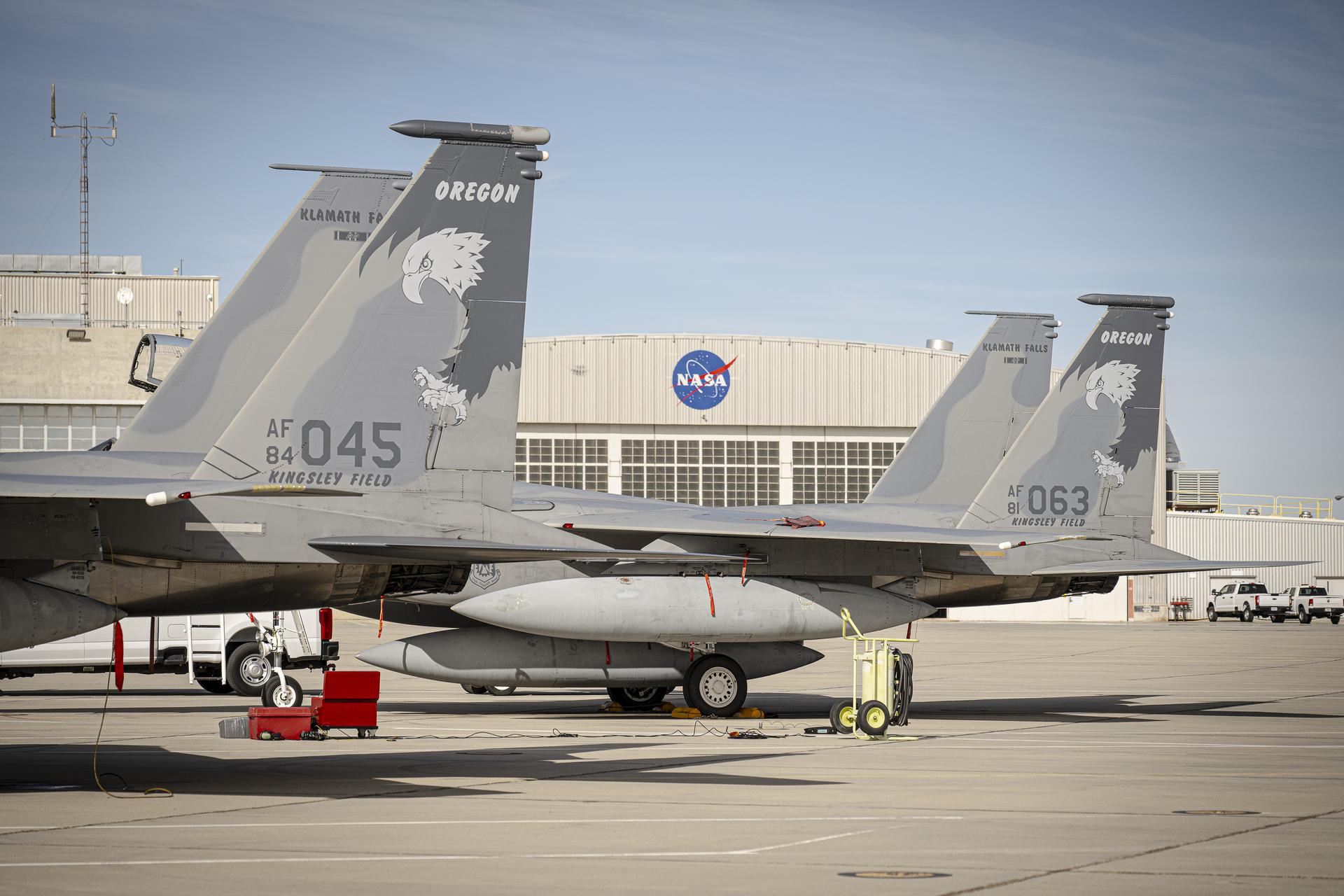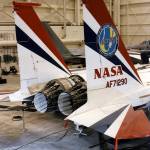F-15D Support Aircraft

Overview
Research support and pilot proficiency flights are flown on F-15D Eagle aircraft at NASA’s Armstrong Flight Research Center in Edwards, California. The F-15Ds have a two-seat cockpit and like the two-seat F-18 support aircraft, they are normally used for photo or video support. They transmit live video from the air back to Armstrong so engineers can visually monitor the mission as it is being flown. This feature greatly enhances flight safety.
NASA research support aircraft are commonly called chase planes and fill the role of escort aircraft during research missions. Chase pilots are in constant radio contact with research pilots and serve as an “extra set of eyes” to help maintain total flight safety during specific tests and maneuvers. They monitor certain events for the research pilot and are an important safety feature on all research missions.
Chase aircraft also are used as camera platforms for research missions that must be photographed or videotaped. Aeronautical engineers use this pictorial coverage (photos, motion pictures, and videotape) extensively to monitor and verify various aspects of research projects. The F-15Ds are also used by Armstrong research pilots for routine flight training required by all NASA pilots.






























